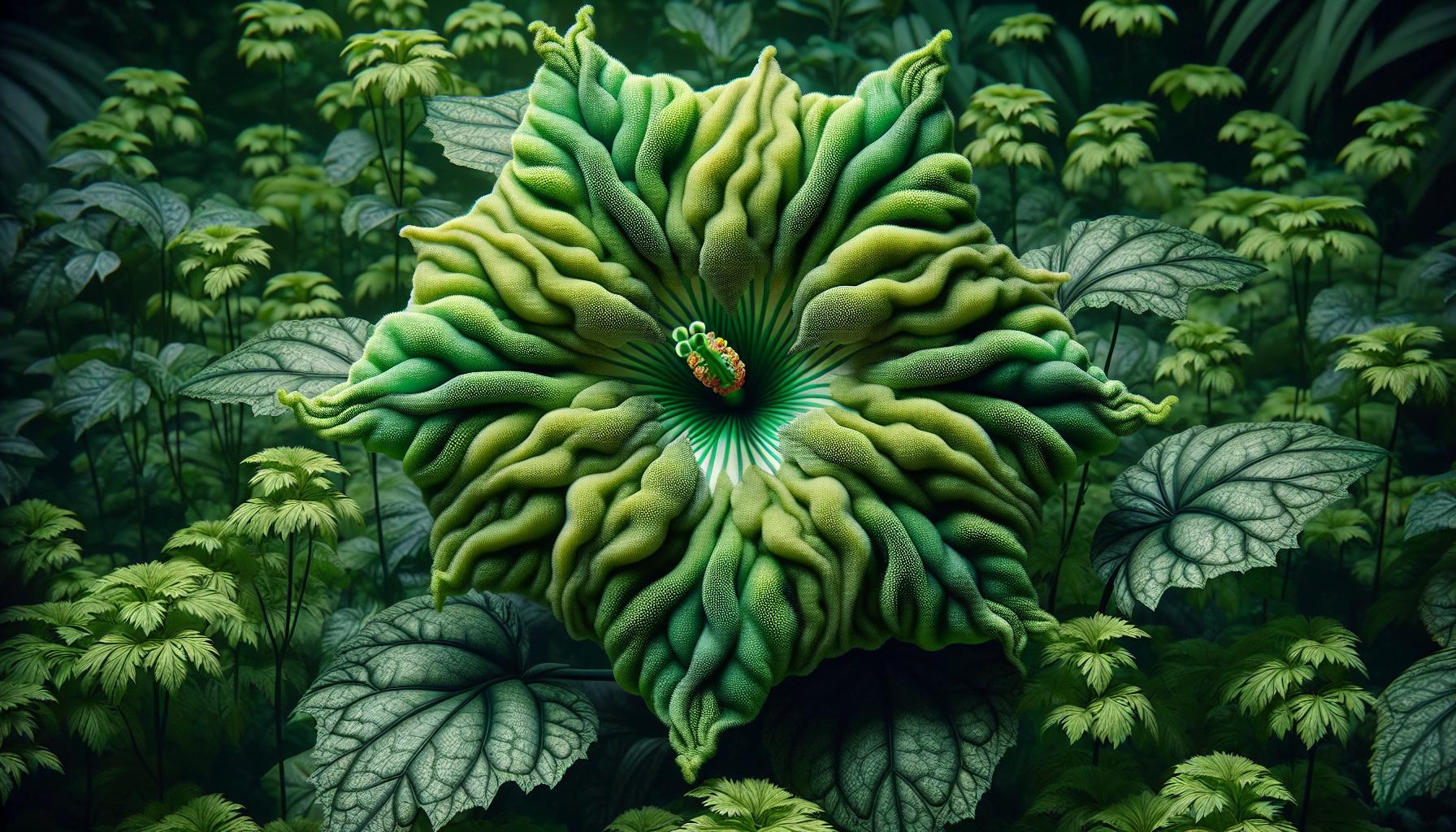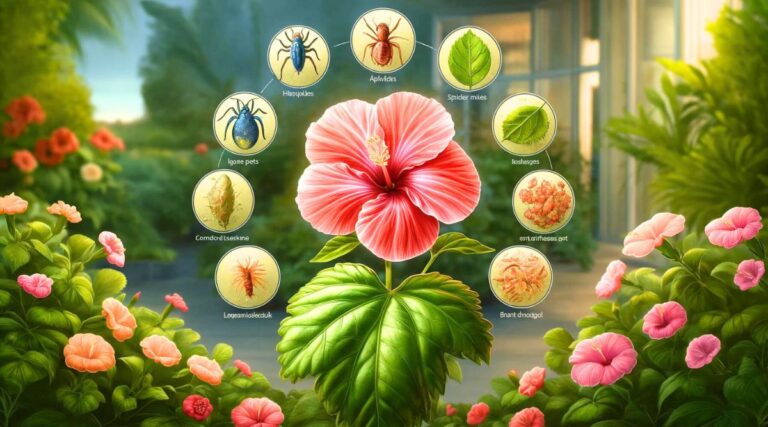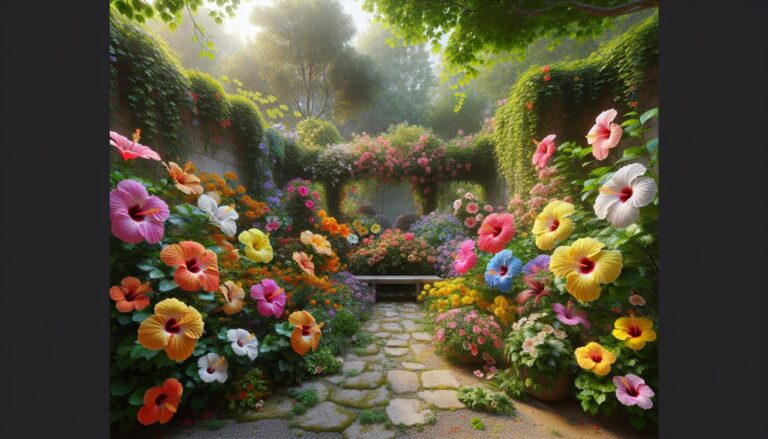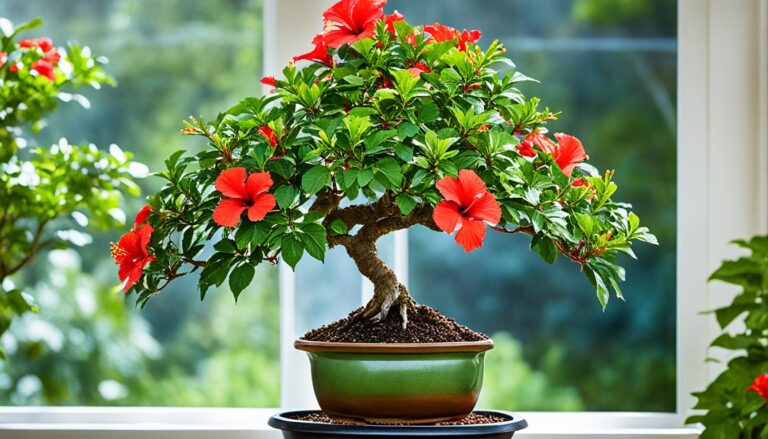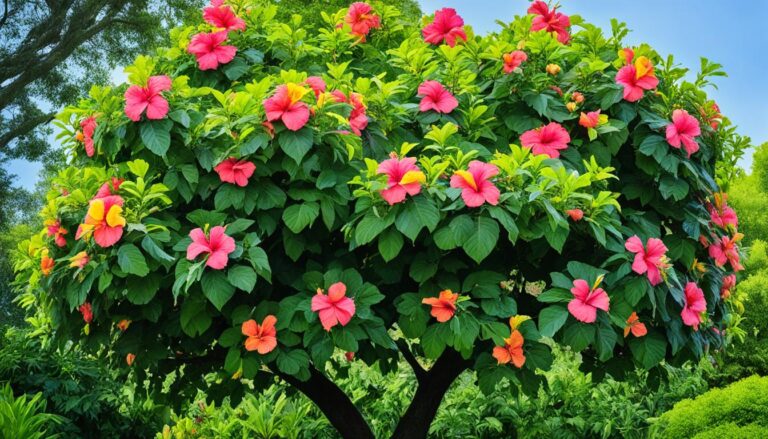Green Hibiscus Care & Landscaping Ideas: Guide to Thriving Gardens
In our quest for unique and stunning plants to add to our gardens, we’ve stumbled upon a gem that’s both rare and captivating: the green hibiscus. Unlike its more common red, pink, or yellow cousins, this variant offers a lush, verdant bloom that’s sure to be a conversation starter. It’s not just a visual treat; the green hibiscus is a testament to the diversity and adaptability of nature, thriving in a variety of climates and settings.
But what makes the green hibiscus truly special isn’t just its unusual color. It’s also prized for its ease of care and the way it attracts pollinators, making it a valuable addition to any eco-friendly garden. As we dive deeper, we’ll explore the secrets behind its vibrant leaves and how to successfully integrate this plant into your outdoor space. Join us as we uncover the allure of the green hibiscus, a plant that’s as intriguing as it is beautiful.
Key Takeaways
- The green hibiscus is a unique and rare plant variant within the Hibiscus genus, offering eye-catching verdant blooms and lush foliage, making it a standout addition to any garden.
- Tailored care, involving specific soil conditions, sunlight exposure, and watering practices, is crucial for the thriving growth of green hibiscus, emphasizing the importance of a well-draining soil mix, consistent soil moisture, and adequate sunlight.
- Effective propagation of green hibiscus can be achieved through either seed propagation or cutting propagation, offering gardeners flexibility in expanding their collection of this rare plant.
- Despite the green hibiscus’s resilience, it is susceptible to certain pests, diseases, and environmental stresses, requiring vigilant care and integrated pest management (IPM) strategies to maintain plant health and vigor.
- Green hibiscus serves dual roles in landscaping as both a distinctive standalone specimen and a striking component within mixed flower beds, enhancing garden aesthetics with its unique color and texture.
- Addressing common cultivation challenges and employing creative landscaping uses of green hibiscus not only ensures the health and vitality of the plant but also elevates outdoor spaces with its distinct allure.
Unveiling the Green Hibiscus: A Vibrant Addition to Your Garden
Origins and Species
Diving deeper into the green hibiscus, let’s explore its origins and the species within this fascinating group. Native to subtropical and tropical regions, the green hibiscus belongs to the extensive Hibiscus genus, which is part of the Malvaceae family. This genus encompasses over 200 species, including both annual and perennial herbaceous plants, as well as woody shrubs and small trees. The specific green variants, known for their unique foliage and flower coloration, are less common than their brightly colored counterparts. Among these, the Hibiscus cannabinus, also known as kenaf, is notable for its green blooms and utility in various industries, ranging from textiles to paper production.
Unique Characteristics
The green hibiscus sets itself apart with several distinctive features. Primarily, its vibrant green flowers are a visual anomaly in the world of hibiscus, where reds, pinks, and yellows typically dominate. These green flowers not only serve as a unique decorative element but also attract a wide variety of pollinators, contributing to the biodiversity and ecological health of gardens. Additionally, the leaves of the green hibiscus can vary in shade from a deep, rich green to a lighter, almost lime-green hue, depending on the species and environmental conditions. This plant’s adaptability to different climates and its drought-resistant nature make it an excellent choice for gardeners seeking to add a touch of the unusual to their outdoor spaces without sacrificing ease of care.
Care and Cultivation of Green Hibiscus

Transitioning from its striking appearance and adaptability, caring for the green hibiscus involves specific practices to ensure its thriving presence in your garden. Mastery of the ideal soil conditions, alongside judicious sunlight and watering strategies, plays a pivotal role in nurturing this plant.
Ideal Soil Conditions
For the green hibiscus, soil acts as a foundational pillar of health. We find that a well-draining soil enriched with organic matter optimizes its growth. This plant exhibits a preference for a slightly acidic to neutral pH, typically between 6.0 and 7.0. Amending the planting area with compost or a balanced fertilizer enhances the soil’s nutrient profile, compelling the green hibiscus to flourish. Regular soil testing can guide adjustments, ensuring the environment remains conducive to the plant’s health. Avoid waterlogged conditions, as they predispose the roots to rot, compromising the plant’s vitality.
Sunlight and Watering Needs
Tailoring the sunlight exposure and watering regimen to the green hibiscus’ needs fosters a vigorous plant teeming with vibrant flowers. We advocate for positioning the plant in an area that receives full to partial sun. A minimum of 6 hours of direct sunlight fosters optimal flower production. However, in regions with intensely hot climates, partial afternoon shade prevents leaf scorch and stress on the plant.
Watering demands a balanced approach; the green hibiscus thrives in moist, but not saturated, soil conditions. We recommend deep, infrequent watering that encourages strong root development over shallow, frequent sprinklings. During the growing season, ensure the top inch of soil dries out before watering again. This practice reduces the chances of overwatering. In drought conditions, a slight increase in watering frequency supports the plant’s needs without compromising its health.
Propagation Techniques for Green Hibiscus

Transitioning from the vital care and cultivation aspects required for a thriving green hibiscus plant, we delve into the propagation techniques that ensure its successful reproduction. Propagation not only contributes to the spread of this rare species but also enables gardeners to expand their eco-friendly gardens efficiently. Two primary methods stand out for propagating green hibiscus: seed propagation and cutting propagation. Each method suits different gardener preferences and conditions, offering flexibility in cultivation practices.
Seed Propagation
Seed propagation stands as a fundamental approach for growing green hibiscus and involves several clear steps to enhance germination rates. Firstly, collecting seeds from mature pods after they have dried on the plant maximizes viability. Before sowing, we recommend soaking the seeds in lukewarm water for about 8 hours, which helps break down the seed’s hard coat, promoting easier germination. Sow the seeds in well-draining soil, ensuring they’re lightly covered with soil. A critical step involves maintaining a consistent soil moisture level and providing warmth, ideally between 75°F to 85°F, until germination occurs, which typically takes 1 to 2 weeks. Seed propagation allows gardeners to observe the full life cycle of green hibiscus but requires patience as plants grow and mature to produce the signature green blooms.
Cutting Propagation
Cutting propagation offers a quicker alternative to seed propagation, ideal for those looking to replicate the exact characteristics of a specific green hibiscus plant. This method involves taking healthy, disease-free cuttings from a mature plant during its active growth period, usually in the spring or early summer. Cuttings should be about 4 to 6 inches long, with several leaves intact. The lower leaves are removed, and the cut end is dipped in a rooting hormone to promote root development. Planting the cuttings in a mix of peat and perlite ensures good drainage and aeration, essential for root formation. Keeping the cuttings in a humid, warm environment, with temperatures similar to seed propagation, encourages successful rooting. Cuttings typically root within 3 to 4 weeks, after which they can be transferred to individual pots with well-draining soil. This method’s advantage lies in its ability to produce flowering plants quicker than seed propagation, offering a faster route to enjoying the exquisite beauty of green hibiscus flowers.
Through seed propagation and cutting propagation, garden enthusiasts can choose the method that best suits their preferences and conditions, ensuring the spread and enjoyment of the green hibiscus in eco-friendly gardens worldwide.
Common Challenges in Growing Green Hibiscus

Exploring the nuances of cultivating green hibiscus reveals not only its unique beauty but also the hurdles one may encounter. As we’ve discussed its ideal soil conditions, sunlight needs, and propagation methods, it’s crucial to understand the challenges that might impede our success. Let’s dive into the common issues and how to address them.
Pests and Diseases
Green hibiscus plants, despite their resilience, are susceptible to specific pests and diseases that can compromise their health and growth. Aphids, spider mites, and whiteflies rank among the most common pests, attacking the plants by feeding on sap and causing leaf damage or discoloration. Diseases such as fungal infections, particularly powdery mildew and root rot, pose significant threats as well, often exacerbated by high humidity or improper watering practices.
Managing these challenges involves regular monitoring and prompt action. Implementing an integrated pest management (IPM) strategy, comprising biological control methods, proper plant care, and, when necessary, the use of insecticidal soaps or fungicides, proves effective. Ensuring good air circulation around the plants and maintaining a clean garden devoid of plant debris help minimize the risk of pest and disease infestation.
Overcoming Environmental Stress
Environmental stress factors, including extreme temperatures, insufficient or excessive sunlight, and improper soil conditions, can hinder green hibiscus growth. These plants thrive in well-draining soil and benefit from partial to full sunlight exposure, depending on the climate. However, prolonged exposure to direct, harsh sunlight or continuous shade can lead to stress, manifesting in dropped leaves, stunted growth, or failure to flower.
To mitigate these stress factors, we tailor our care practices to the needs of green hibiscus and the specifics of our growing environment. Mulching helps retain soil moisture and regulate temperature, providing a more stable root environment. During peak summer months, offering shade during the hottest part of the day can prevent heat stress, while ensuring adequate light during winter or in predominantly cloudy regions supports healthy growth.
By addressing pests and diseases promptly and adjusting care practices to counter environmental stress, we can foster the growth of robust green hibiscus plants. These strategies not only mitigate the challenges faced during cultivation but also enhance the overall vitality of the plants, enabling gardeners to revel in the unique allure of green hibiscus flowers.
Creative Uses of Green Hibiscus in Landscaping

Following our insight into the care, propagation, and troubleshooting of green hibiscus health issues, we now explore the plant’s aesthetic role in landscaping. With its unique verdant blooms, green hibiscus serves not just as a botanical rarity but also a striking design element. We’ll delve into two creative ways to incorporate this plant into outdoor spaces: as a standout specimen and within mixed flower beds.
As a Standalone Specimen
Utilizing the green hibiscus as a standalone specimen is a testament to its singular beauty. Positioned prominently, this approach allows the plant to serve as a focal point in gardens or yards. Its rare green flowers and lush foliage draw the eye, offering a contrast to the more common flower colors found in most landscapes. For a compelling visual impact, we place green hibiscus in areas of high visibility such as entranceways or garden centers. Here, it can fully command attention, with surrounding landscaping elements chosen to complement, not compete with, its allure. Lighting, whether natural or artificial, plays a crucial role in accentuating the green hibiscus’s unique characteristics, especially during twilight hours when its green hue can seem most vibrant.
In Mixed Flower Beds
Incorporating green hibiscus into mixed flower beds introduces texture, color depth, and visual interest. When paired with flowers of contrasting colors, such as purples, pinks, or whites, the green hibiscus’s unusual color becomes a dynamic component of the overall garden palette. We recommend planting it alongside perennials that bloom at similar times, ensuring a continuous display of color through the blooming season. Additionally, considering height and growth patterns ensures that the green hibiscus, often a taller plant, is placed where it can rise above lower-growing companions, thereby allowing sunlight to reach all plants equally. Companion plants, such as lavender, salvia, and shasta daisies, not only complement the green hibiscus aesthetically but can also promote a healthy garden ecosystem by attracting pollinators and beneficial insects.
By thoughtfully integrating green hibiscus into landscaping, gardeners and designers can achieve striking visual effects that elevate outdoor spaces. Whether standing alone or mingling among a variety of plants, green hibiscus proves versatile and impactful, providing a unique identifier in garden design.
Conclusion
We’ve journeyed through the intriguing world of the green hibiscus, from its care and propagation to its stunning use in garden design. Armed with these insights, we’re confident you can bring a touch of the unique and rare into your outdoor spaces. Whether you’re aiming for a dramatic focal point or a harmonious blend in your flower beds, the green hibiscus stands ready to transform your garden with its distinctive charm. Let’s embrace the beauty and versatility of this extraordinary plant, ensuring it thrives under our care and enhances our landscapes with its unparalleled allure. Happy gardening!

